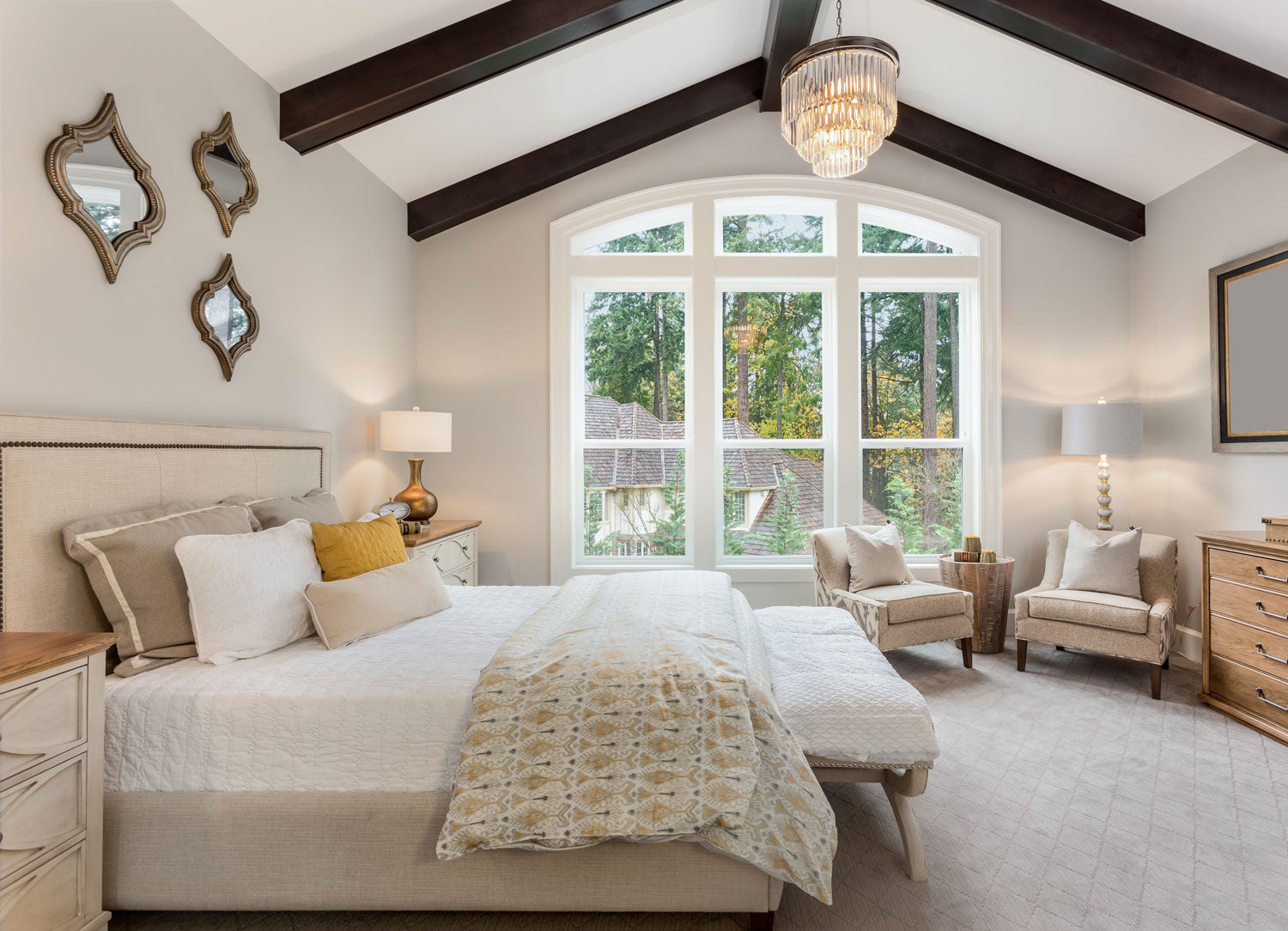On orders $99+
On orders $99+


A general guideline for bedroom lighting is a total light output of 1500-3000 lumens. You can achieve this by using a combination of different light sources, such as overhead fixtures, table lamps, and wall sconces. However, the type of light bulb you choose can also have a significant impact on the ambiance of your room. Warmer tones (around 2700-3000K) can create a cozy and relaxing atmosphere, while cooler tones (around 4000-5000K) can be more energizing and invigorating.
Here are some general size guidelines for different types of bedrooms:
Interior lighting design is a fundamental aspect of any interior design plan, as it plays an indispensable role in shaping the ambiance and functionality of a space. However, achieving a successful lighting design for your bedroom can be challenging, as it requires a balance between aesthetics and practicality. Fear not, as we have some tips to help you create a bedroom lighting design that strikes this delicate balance, and enhances both the beauty and functionality of your space.

The first step in designing interior lighting for your bedroom is to determine your lighting needs. You should consider the activities you'll be doing in the space, such as reading, dressing, or relaxing, and how much light you'll need for each activity. It is also important to consider the size of your bedroom and the amount of natural light it receives.
When it comes to selecting the right light bulbs, it's important to consider both energy efficiency and longevity. LED bulbs are a popular choice for their energy efficiency and long lifespan, while CFL bulbs are a more affordable alternative.
Once you've determined your lighting needs and chosen the right light bulbs, it's time to implement the lighting fixtures. Overhead fixtures can provide general illumination and act as a focal point in the room. Table lamps are perfect for providing task lighting for activities such as reading or working on a laptop in bed. Wall sconces can provide ambient lighting and free up space on bedside tables, creating a dramatic effect and enhancing the overall design of the room.
When implementing these fixtures, it's important to consider their placement and the direction of the light they emit. To avoid harsh shadows, you can choose fixtures that have diffusers or shades. Dimmer switches can also be added to overhead fixtures to control the light level.
Lastly, it is essential to consult with a licensed electrician to ensure proper installation and wiring of your lighting fixtures. Properly installed lighting fixtures can enhance the beauty and functionality of your bedroom while keeping you and your loved ones safe.
In conclusion, designing interior lighting for your bedroom requires careful consideration of your lighting needs, light bulb selection, and implementation of the lighting fixtures. With the right lighting design, you can create a comfortable and inviting space that meets your personal style and needs.
Helpful Links: Bedroom Lighting Guide: Where to start?
Leave a comment